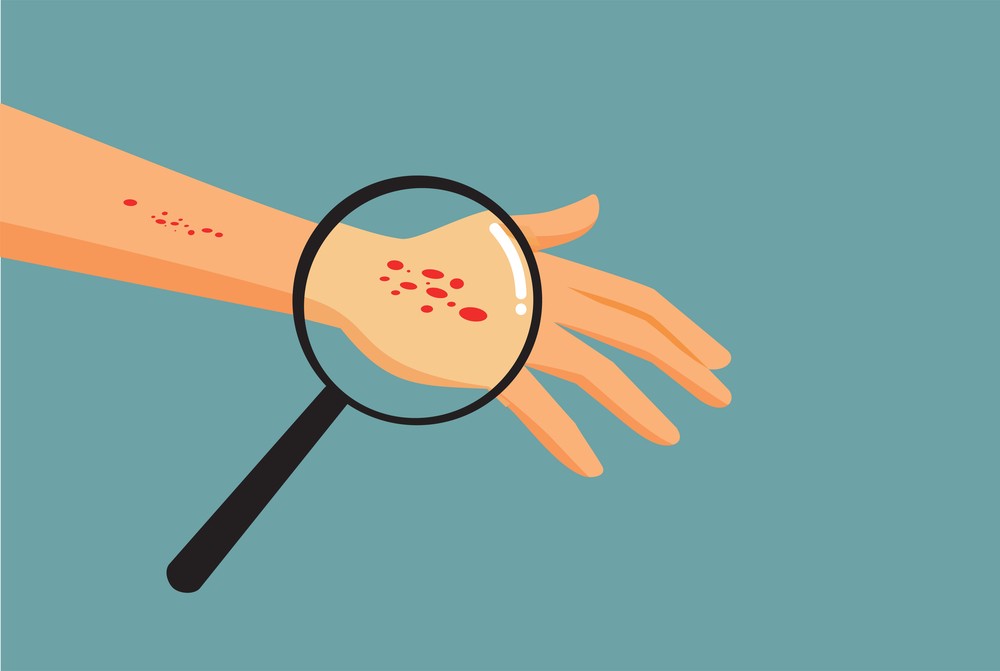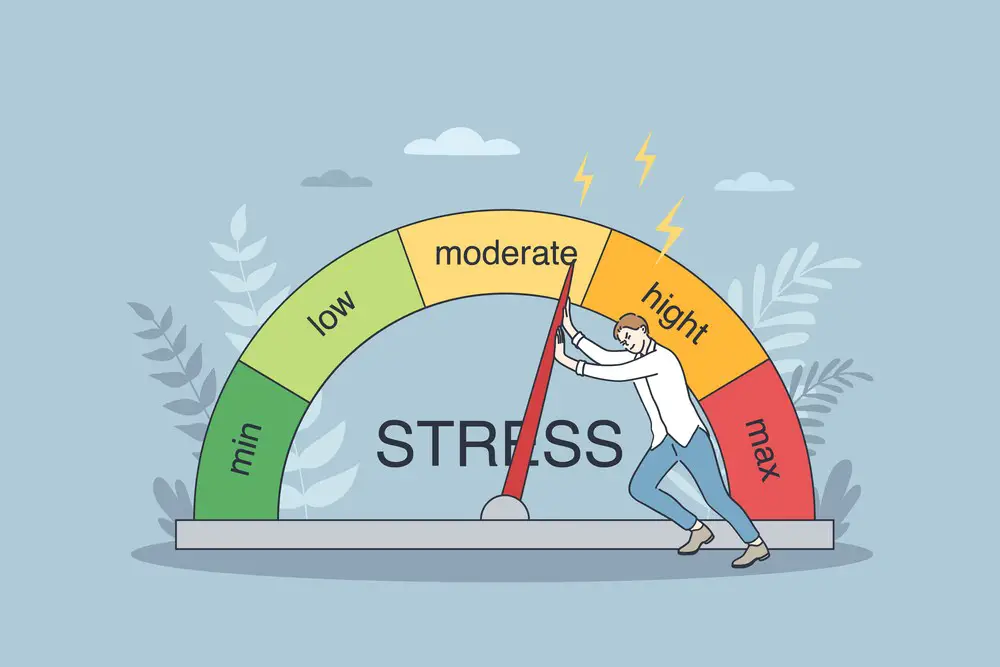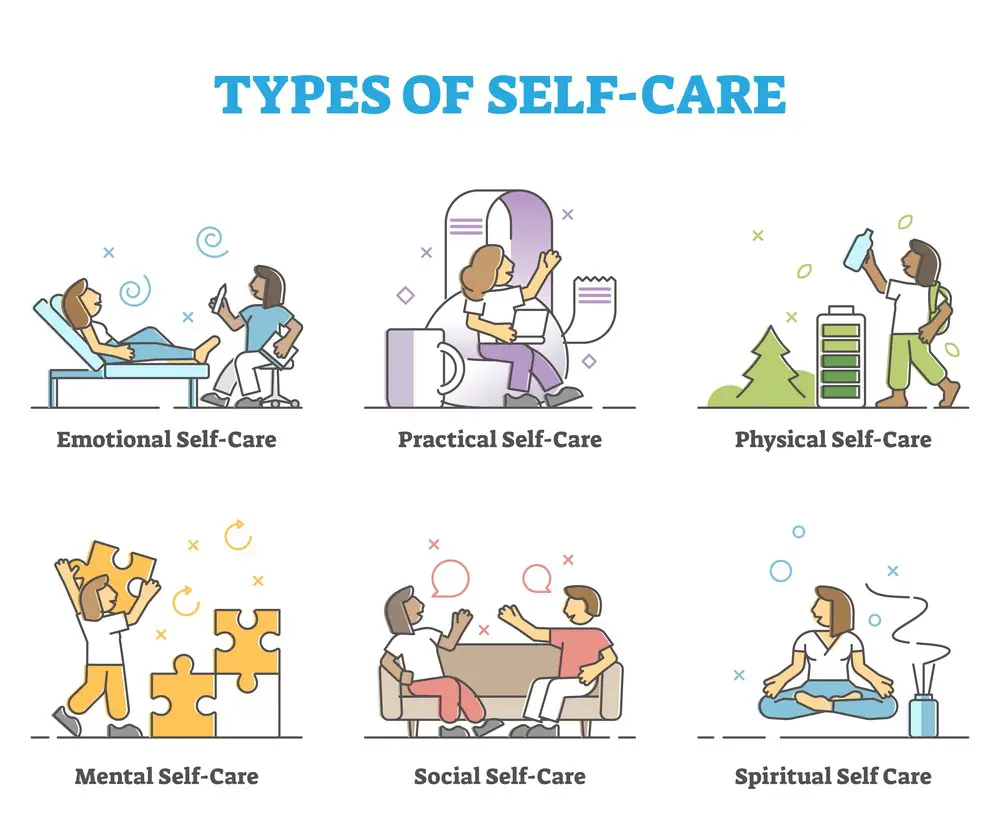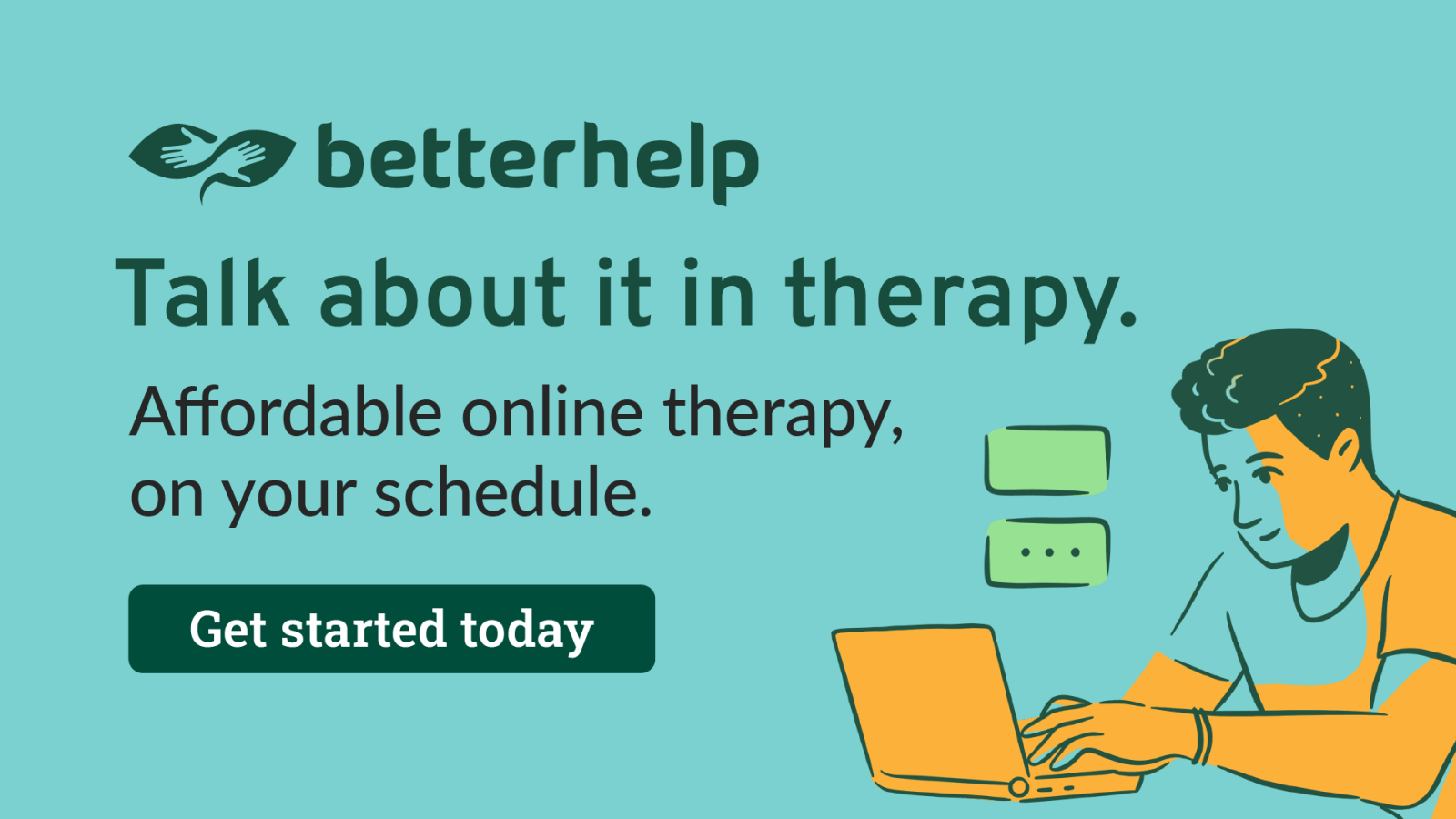As a BetterHelp affiliate, we receive compensation from BetterHelp if you purchase products or services through the links provided
Stress is a part of daily life, and most people know the toll it can take on their mental and emotional health. However, stress can also manifest in physical symptoms, some of which may be surprising. One such physical symptom that has been debated concerning stress is petechiae. Petechiae are small, pinpoint, non-raised, red or purple spots that can appear on the skin or mucous membranes due to bleeding under the skin’s surface.
Understanding the possible connection between stress and petechiae starts with understanding what petechiae are and what causes them. Typically, petechiae are caused by broken blood vessels under the skin, often due to blood clotting issues or increased capillary fragility. In some cases, such bleeding can be associated with elevated stress levels in the body; however, not all cases of petechiae can be attributed to stress. It’s essential to consider other possible causes and symptoms when evaluating the presence of petechiae on your skin.
Key Takeaways
- Petechiae are small, red, or purple spots caused by bleeding under the skin.
- The connection between stress and petechiae is still under debate.
- Considering other possible causes and symptoms is crucial before attributing petechiae to stress.
 Understanding Petechiae
Understanding Petechiae
Petechiae are small, round, flat red or purple spots on the skin. They are typically caused by broken blood vessels under the skin’s surface and don’t pose any significant health risk.
When you notice these tiny red dots on your skin, it may indicate some underlying issue. They are often a result of increased pressure in the blood vessels, which can cause them to rupture. Petechiae can arise from various situations, such as straining during vomiting, coughing, or even heavy lifting.
Although petechiae can be associated with several conditions, it’s essential to understand if stress can cause these spots to appear. Elevated stress levels can indirectly contribute to the formation of petechiae due to the increased pressure in your blood vessels. For example, if your stress triggers episodes of severe coughing or induces vomiting, the subsequent strain on the blood vessels can lead to petechiae.
Keep in mind that petechiae are different from bruises. Bruising occurs when blood vessels break and leak blood into the surrounding tissue, causing discoloration and swelling. On the other hand, petechiae are smaller and tend to remain flat on the skin’s surface. This distinction can help you determine whether the red dots you encounter are petechiae or just ordinary bruising.
By understanding the connection between stress and the appearance of petechiae, you can better navigate any potential concerns related to these red dots on your skin. If you’re unsure, it’s always worth discussing them with your healthcare provider, as they can help you identify any underlying issues and recommend appropriate treatment options.
Possible Causes of Petechiae
Petechiae are small, pinpoint-like dots that appear under the skin, usually due to broken blood vessels. They can be alarming or disconcerting, especially when their origin is unknown. Many factors can cause petechiae, and various conditions may be involved. Below are some of the possible reasons for these tiny hematologic disturbances.
Infections: Both bacterial and viral infections can lead to the presence of petechiae. These may be the culprits if you suffer from a bacterial infection like endocarditis or a viral infection like mono. Even severe cases like viral hemorrhagic fevers can cause petechiae.
Vasculitis and other medical conditions: Inflammation of the blood vessels, or vasculitis, might also be responsible for the appearance of petechiae. Other diseases like scurvy and leukemia could also be potential causes. Rocky Mountain spotted fever, another serious condition, can also cause petechiae.
Physical strain: Everyday actions like coughing or vomiting can pressure the small capillaries under the skin, causing them to rupture and form petechiae. Although this might be a mundane cause, it’s still important to consider.
Medications: Some medications may bring about petechiae as a side effect. This includes certain antidepressants, NSAIDs, quinine, and phenytoin. If you believe your medications could be causing petechiae, consult with your doctor to discuss alternatives.
While the list of possible causes is extensive, it’s key to remember that your experience is unique. It’s important to consult with a healthcare professional to determine the origin of your petechiae and receive any necessary treatment. This information provided should not be used in place of medical advice.
 Petechiae and Stress: Is There a Connection?
Petechiae and Stress: Is There a Connection?
You might be wondering if there’s a link between stress and petechiae. Petechiae are small, pinpoint, flat red or purple spots on the skin caused by broken capillaries. They can result from various factors, but can stress be one of them? Let’s explore the connection.
Stress, as you know, triggers the release of certain chemicals in your body, including adrenaline and cortisol. These hormones can cause a temporary increase in blood pressure, causing your blood vessels to constrict. In some cases, this constriction can lead to the rupture of tiny blood vessels, resulting in petechiae.
It is important to note that stress-related petechiae are uncommon and usually occur only in extreme situations or when an individual is under prolonged and intense stress. In most cases, petechiae appear due to other causes, such as:
- Injuries or trauma
- Infections like meningitis or sepsis
- Medications that thin the blood or affect platelet function
- Autoimmune conditions and blood disorders
When you’re in situations that cause stress, consider some of the following strategies to help alleviate it and potentially reduce the risk of stress-related petechiae:
- Practice relaxation techniques like deep breathing, meditation, or yoga
- Engage in regular physical activity or exercise to release tension
- Maintain a balanced diet and stay well-hydrated
- Talk to friends, family or a therapist about what’s causing your stress
Remember, while there could be a connection between stress and petechiae, it is not a definitive cause. If you notice any petechiae on your skin or experience other unusual symptoms, it’s essential to consult with a healthcare professional to determine the underlying cause and receive appropriate treatment.
Symptoms Accompanying Petechiae
When you notice petechiae, observing any accompanying symptoms is crucial, as these can provide important insight into the underlying cause. Common symptoms that can appear alongside petechiae are:
- Rash: In case of an inflammatory response or an infection, a rash may occur concurrently with petechiae. It could be localized or spread across a larger area of your body.
- Fever: Running a fever is often your body’s way of fighting infections and inflammations. If you experience an elevated temperature alongside petechiae, it might indicate an ongoing immune response.
- Trouble breathing & shortness of breath: Respiratory issues might be linked to the presence of petechiae, especially when it’s a result of a severe allergic reaction, clotting disorder, or a pulmonary issue.
- Headache: A headache associated with petechiae might signify a vascular or blood pressure-related issue. It is essential to monitor and report this to your healthcare provider.
- Fatigue & weakness: Feeling unusually tired and weak could be the body’s reaction to an infection or stress that causes petechiae. Pay attention to any sudden changes in your energy levels.
- Pain: Experiencing localized or widespread pain may coincide with petechiae. Pain might indicate inflammation or an injury that affects the blood vessels.
Keeping an eye out for these symptoms can help you and your healthcare provider identify the underlying cause of petechiae. Make sure to mention any of these accompanying symptoms when consulting with your doctor, as it may aid in determining the most appropriate course of action for your treatment.
Diagnosis of Petechiae
When you notice small, red, or purple spots on your skin, it’s natural to be concerned. Petechiae could be a sign of stress or a more serious underlying condition. Before jumping to conclusions, visiting a doctor for a proper diagnosis is crucial.
During your appointment, your doctor will likely ask you about your symptoms, medical history, and any recent activities or experiences that may have contributed to the appearance of petechiae. They may also examine the affected area to understand better the size, shape, and distribution of the spots.
To help determine the cause of your petechiae, the doctor might order some tests, such as:
- Blood tests: These can identify any abnormalities in your blood cells, platelet counts, or clotting factors, indicating various conditions associated with petechiae.
- Coagulation tests: These tests measure how well your blood clots and can help identify issues related to bleeding disorders.
- Chest X-ray or CT scan: If the doctor suspects an infection or inflammation in your lungs, they may use imaging tests to get a clearer picture.
Your doctor may also ask about your medications, as certain drugs can cause petechiae. Once they’ve gathered sufficient information, they’ll work on narrowing down the potential causes and discussing treatment options with you.
Remember, while stress can cause petechiae, it’s essential not to self-diagnose. By consulting with a healthcare professional, you ensure that you receive an accurate diagnosis and appropriate treatment for your specific needs.
Possible Treatments for Petechiae
When dealing with petechiae caused by stress, it’s important to address the root cause and manage your stress levels. You can try relaxation techniques, exercise, or seek professional help through therapy. In the meantime, here are some possible treatments for managing petechiae itself:
- Medicines: Depending on the cause of your petechiae, your doctor may prescribe specific medications to help with your condition. For instance, if a bacterial infection causes your petechiae, antibiotics such as penicillin might be prescribed. Follow your doctor’s advice and complete the recommended treatment course.
- Steroids and anti-inflammatory drugs: In some cases, corticosteroids or non-steroidal anti-inflammatory drugs (NSAIDs) can help reduce inflammation and control symptoms related to petechiae. These medications can be taken orally or applied topically as creams or ointments.
- Blood thinners: If your petechiae are caused by blood clotting disorders or poor circulation, your doctor may recommend blood thinners like aspirin or anticoagulants to help prevent further clots and improve blood flow. However, always consult your doctor before starting any blood-thinning medications, as they can have side effects or interact with other drugs you are taking.
- Chemotherapy: In rare cases, petechiae might be a cancer symptom, such as leukemia or lymphoma. If so, your doctor may suggest chemotherapy treatments to address the underlying cause. Chemotherapy might cause its own side effects, so discussing the risks and benefits with your healthcare provider is crucial.
Remember that it’s always best to consult with your doctor when dealing with petechiae, as they can determine the best course of action based on your specific situation and medical history. Keep an open line of communication and follow their recommendations to ensure the most effective treatment for your condition.
Preventing Petechiae
To prevent the occurrence of petechiae, you can make several lifestyle changes, focusing on aspects such as your diet, sleep, fluid intake, and rest. Here are some friendly tips for keeping those red spots at bay:
1. A balanced diet: Eating a well-balanced diet can greatly improve your overall health. To reduce the risk of petechiae, include vitamin C and K-rich foods in your meals, like citrus fruits, leafy greens, and bell peppers. These vitamins are vital in maintaining the strength and function of your blood vessels.
2. Get ample sleep: Your body needs enough sleep to rejuvenate and repair. You should get 7-9 hours of sleep each night. Establishing a regular sleep schedule will help you manage stress and lower the risk of petechiae.
3. Stay hydrated: Drinking sufficient fluids throughout the day helps regulate blood pressure and supports healthy blood vessels. Aim to drink at least 8 cups (64oz) of water daily. While consumption of coffee and soft drinks may be tempting, try to limit your caffeine intake, as it can dehydrate your body.
4. Take time to rest: Giving your body ample time to rest and recover can reduce stress. Take short breaks from work, practice deep breathing exercises, or engage in calming activities like yoga or meditation. This will help counteract the stress that can lead to petechiae.
5. Physical activity: Regular exercise improves your blood circulation and reduces stress levels. You should aim for at least 30 minutes of moderate exercise, such as walking, swimming, or cycling, three to five times a week. Don’t forget to stretch before and after your workout sessions to maintain flexibility and prevent injuries.
By incorporating these practices into your daily routine, you can effectively reduce stress and create a healthier body environment, combating petechiae development.
When to Seek Medical Attention
Experiencing stress and noticing petechiae on your body can be quite concerning. Although they may not always reflect a serious condition, paying attention to your body’s signals and seeking medical attention under specific circumstances is essential.
Petechiae can sometimes appear if you’ve recently been through a high-stress situation like a car accident or a substantial emotional upheaval like excessive crying. The same goes for physical stressors such as giving birth. The cause might be evident in these cases, but it’s still a good idea to consult your doctor to rule out any underlying issues.
On the other hand, if you notice petechiae without a clear cause or when accompanied by other alarming symptoms, be sure to contact a healthcare professional immediately. Symptoms that may warrant medical attention include:
- Fever or chills
- Severe headache
- Unexplained fatigue or weakness
- Bleeding gums or nosebleeds
- Recurring infections or illness
Remember, it’s always better to be safe than sorry. Don’t hesitate to reach out to your doctor for guidance when in doubt. A timely evaluation of your symptoms is crucial for detecting potential health issues and ensuring appropriate treatment.
Petechiae in Special Populations
Children and individuals with cancer, specifically blood or bone marrow-related conditions, may be more susceptible to developing petechiae. This section will discuss the reasons for this increased risk and how to monitor it.
Children’s delicate skin may be more prone to petechial markings, especially if they have experienced trauma or are dealing with an illness. It’s essential to monitor your child’s health closely, and if you notice any petechial spots, consult with a healthcare professional to identify the underlying cause and provide appropriate management.
Cancer patients, particularly those with blood or bone marrow conditions, often experience stress from treatment or the tumor. This stress can weaken their immune system and the body’s ability to regulate blood clotting, ultimately increasing the likelihood of developing petechiae. People with cancer must communicate with their healthcare team and report any changes in their skin or overall health.
Blood cancers or issues with bone marrow functionality can already impair blood clotting ability. As a result, even the smallest of stressors on fragile capillaries can lead to petechiae. As a proactive measure, consider monitoring your skin for the appearance of any spots and addressing concerns with your healthcare provider.
In summary, special populations, including children and people with cancer or bone marrow conditions, may have an increased risk of developing petechiae due to the stress on their bodies. It’s important to stay vigilant, communicate with healthcare professionals, and monitor your skin to catch any issues early and avoid complications.
 Recognizing the Storm: When Stress Spirals Out of Control
Recognizing the Storm: When Stress Spirals Out of Control
Knowing when stress is too much to handle alone is crucial for your well-being. Let’s delve into the red flags signaling that your stress might be more than a DIY project:
Signs of Excessive Stress Difficult to Self-Manage
- Persistent irritability or mood swings
- Overwhelming feelings of helplessness or hopelessness
- Uncontrolled bouts of anxiety or panic attacks
- Sleep issues, either too much or too little
- Physical symptoms like frequent headaches, digestive issues, or, perhaps, unexplained petechiae
- Declining performance at work or school
- Avoiding social activities and isolating yourself
- Unhealthy coping mechanisms like excessive drinking or drug use
 Goals for Therapy: Navigating Calmer Waters
Goals for Therapy: Navigating Calmer Waters
Therapy aims not just to manage stress but to equip you with skills for a healthier life. Here’s what you might focus on:
- Identifying triggers and stressors
- Learning coping mechanisms like deep breathing, grounding techniques, and mindfulness
- Building emotional resilience and strengthening interpersonal relationships
- Developing a self-care routine for a balanced life
- Getting to the root of stress to solve the underlying issues
Signs of Progress: The Sky Clears
Change doesn’t happen overnight, but certain signs indicate that you’re on the right path:
- Improved sleep quality
- Lower frequency of physical symptoms like headaches—or petechiae if they were stress-induced
- Enhanced focus and productivity
- A more positive outlook on life, even during challenges
- A sense of emotional balance and greater inner peace
By being alert to the telltale signs of unmanageable stress and knowing the milestones to aim for in therapy, you can navigate your way back to a balanced life. Watch for those signs of progress; they’re your beacons of hope in the foggy stress management journey.
Frequently Asked Questions
Can anxiety lead to petechiae?
Yes, anxiety can potentially lead to petechiae. When stressed or anxious, your body releases stress hormones, such as adrenaline, which can cause blood vessels to constrict. This constriction can lead to a rise in blood pressure and in some cases, result in the formation of small, red blood spots known as petechiae.
What medications can cause blood spots?
Several medications can contribute to the formation of petechiae. These include:
- Blood thinners like aspirin, warfarin, and heparin
- Antidepressants, including selective serotonin reuptake inhibitors (SSRIs)
- Nonsteroidal anti-inflammatory drugs (NSAIDs), like ibuprofen
- Corticosteroids, which are often prescribed to treat inflammation
If you take any of these medications and notice blood spots, consult your doctor for guidance.
Could high blood pressure result in petechiae?
Yes, high blood pressure may lead to petechiae. When blood pressure is elevated, it puts additional strain on the blood vessels, making them more susceptible to rupture. Under such circumstances, tiny blood vessels (capillaries) near your skin’s surface may burst, leading to the appearance of petechiae.
How long do these small red spots usually last?
Petechiae typically fade within a few days to a couple of weeks. The exact duration depends on the underlying cause and your body’s healing ability. If these red spots persist for an extended period or worsen over time, it’s essential to consult a medical professional.
Is petechiae related to exercise?
In some cases, vigorous physical activity, such as heavy weightlifting or intense aerobic exercise, might cause petechiae. The increased pressure generated during such activities can lead to the rupture of tiny blood vessels under the skin. However, petechiae occurring due to exercise usually disappear within a few days.
When should I be concerned about blood spots on my skin?
Though petechiae are often harmless, you should seek medical advice if:
- They appear suddenly or spread rapidly
- You experience other symptoms, such as fever, fatigue, or unexplained weight loss
- They are accompanied by bruises or nosebleeds
- They don’t seem to improve or vanish after a couple of weeks
In some cases, petechiae might indicate a severe underlying health condition that requires prompt attention.
My Lifeline in the Clouds: Finding Solace with BetterHelp
I can’t begin to express how much of a game-changer BetterHelp has been for me. Navigating through the aftermath of 9/11, juggling work-from-home roles while raising kids, and coping with the sudden loss of connection to my children due to my ex’s actions—my life has been nothing short of a rollercoaster. I was drawn to BetterHelp for its undeniable perks:
- Affordability: Let’s be honest. Traditional therapy can empty your wallet faster than you’d like. BetterHelp offers a cost-effective solution.
- Flexible Scheduling: Life’s chaotic enough; you don’t need another fixed appointment to stress about. BetterHelp fits into my schedule, not the other way around.
- Consistency: The convenience means I can maintain consistent progress; there’s no room for excuses like “I’m too busy to go this week.”
I’m a satisfied BetterHelp user and an affiliate, and I couldn’t recommend them more highly.
 Bio: Navigating Turbulent Waters with Resilience
Bio: Navigating Turbulent Waters with Resilience
Life handed me a set of unparalleled challenges—from surviving 9/11 and losing over a thousand coworkers to battling for my rights as a parent against an uncooperative, narcissistic ex-spouse. My children, once my life’s greatest joy and now a source of immense pain, are kept from me despite a court mandate. As the years pass, my ex’s narcissistic tendencies only intensify.
- Therapy Veteran: I’ve been in therapy for a while and recently switched to BetterHelp. It’s a tool that helps me navigate my complex emotional landscape.
- Medication: I take Lexapro to manage my mental health issues, which is essential to my coping mechanism.
- Daily Routine: To clear my head and get some exercise, I go on long walks every day.
I’ve learned to adapt, fight, and continue seeking professional help. My BetterHelp experience has been instrumental in this. I write about mental health and narcissism and run a legal advice site, extending my help to those facing court defiance from non-cooperative spouses. My message is simple: anyone can surmount their mental health challenges with the right tools and mindset.
So, for anyone feeling overwhelmed, I can’t recommend BetterHelp enough. For me, it’s more than just an online therapy platform; it’s a lifeline.
- Breaking the Silence: Why Men’s Mental Health Matters More Than Ever - April 15, 2025
- How to Transform a Home’s Patio Space into a Relaxing Space - March 23, 2025
- 5 Strategies to Use a Cell Phone to Help Manage Your Stress - March 23, 2025
This site contains affiliate links to products. We will receive a commission for purchases made through these links.


 Understanding Petechiae
Understanding Petechiae Petechiae and Stress: Is There a Connection?
Petechiae and Stress: Is There a Connection? Recognizing the Storm: When Stress Spirals Out of Control
Recognizing the Storm: When Stress Spirals Out of Control Goals for Therapy: Navigating Calmer Waters
Goals for Therapy: Navigating Calmer Waters Bio: Navigating Turbulent Waters with Resilience
Bio: Navigating Turbulent Waters with Resilience

